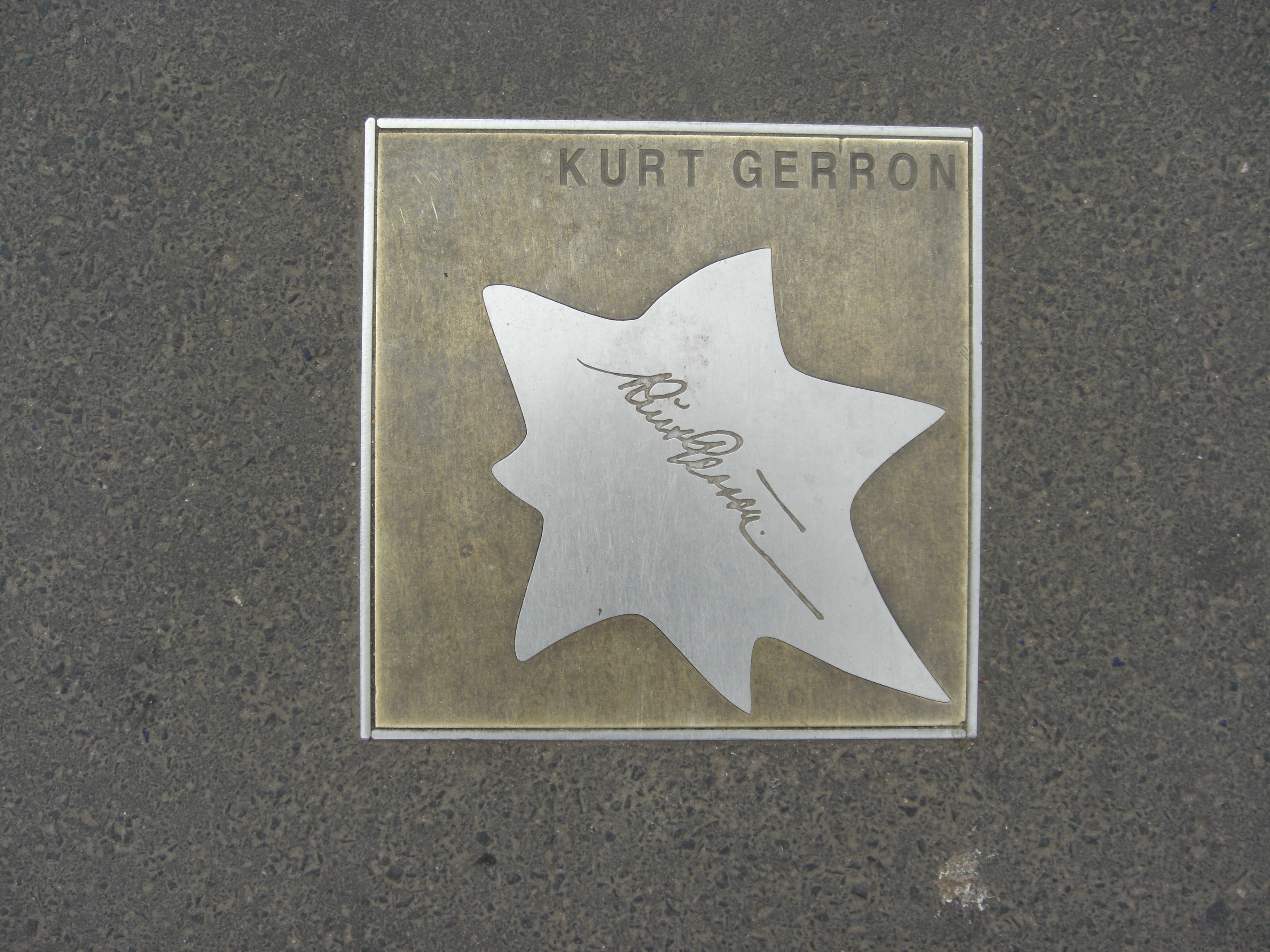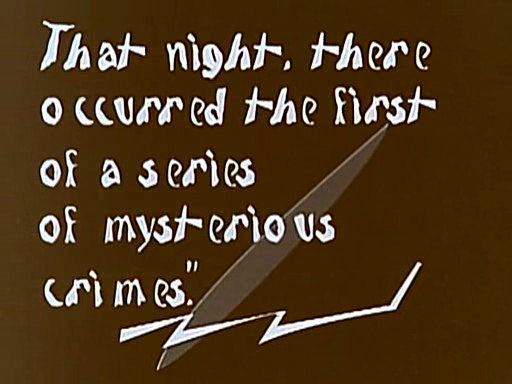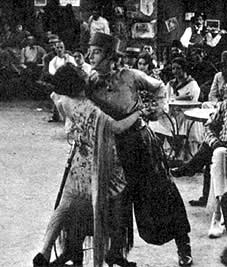|
Semi-Silk
''Semi-Silk'' (german: Halbseide) is a 1925 German silent film directed by Richard Oswald and starring Bernd Aldor, Mary Parker and Valeska Stock.Bock & Bergfelder p. 155 The film's art direction was by Heinrich Richter. Cast * Bernd Aldor as Dr. Gonzales / Dr. Ranzau * Mary Parker as Liane, Frau Gonzales * Valeska Stock as Frau Weber * Mary Kid as Kitty * Bertl Byllardo as Rita, Kittys Tochter * Karl Beckersachs as Kurt / Arthur von Hiller * Hans Albers as Alex Bums / Pumm * Kurt Gerron as Willi Krach, ein Ringer * Fritz Kampers Fritz Kampers (14 July 1891 – 1 September 1950) was a German film actor. He appeared in more than 250 films between 1913 and 1950. Early life Fritz Kampers was the son of a Munich hotel owner, spent his early childhood in Garmisch-Partenk ... as Paul Körner / Hart, Ingenieur References Bibliography * Hans-Michael Bock and Tim Bergfelder. ''The Concise Cinegraph: An Encyclopedia of German Cinema''. Berghahn Books, 2009. External links ... [...More Info...] [...Related Items...] OR: [Wikipedia] [Google] [Baidu] |
Richard Oswald
Richard Oswald (5 November 1880 – 11 September 1963) was an Austrian film director, producer, screenwriter, and father of German-American film director Gerd Oswald. Early career Richard Oswald, born in Vienna as Richard W. Ornstein, began his career as an actor on the Viennese stage. He made his film directorial debut at age 34 with ''The Iron Cross'' (1914) and worked a number of times for Jules Greenbaum. In 1916, Oswald set up his own production company in Germany, writing and directing most of his films himself. His pre-1920 efforts include such literary adaptations as ''The Picture of Dorian Gray (1917 German film), The Picture of Dorian Gray'' (1917), ''Peer Gynt (1919 film), Peer Gynt'' (1919), the once scandalous ''Different from the Others'' (1919) and ''Around the World in Eighty Days (1919 film), Around the World in Eighty Days'' (1919). Oswald directed nearly 100 films. Some critics have suggested that Oswald was more prolific than talented, but such films as his ... [...More Info...] [...Related Items...] OR: [Wikipedia] [Google] [Baidu] |
Heinrich Richter
Heinrich Richter (1884–1981) was a German painter and art director.Soister p.122 He designed the sets for more than a hundred films during his career. Selected filmography * '' The Confessions of the Green Mask'' (1916) * '' The Sensational Trial'' (1923) * '' Upstairs and Downstairs'' (1925) * ''Semi-Silk'' (1925) * '' Should We Be Silent?'' (1926) * ''A Crazy Night'' (1927) * '' One Plus One Equals Three'' (1927) * '' Children's Souls Accuse You'' (1927) * '' The Trousers'' (1927) * '' The Girl with the Five Zeros'' (1927) * '' When the Guard Marches'' (1928) * '' The Prince of Rogues'' (1928) * '' The House Without Men'' (1928) * ''Master and Mistress'' (1928) * '' Villa Falconieri'' (1928) * '' Sinful and Sweet'' (1929) * '' The Man Without Love '' (1929) * '' The Call of the North'' (1929) * ''Daughter of the Regiment'' (1929) * '' Come Back, All Is Forgiven'' (1929) * '' Mischievous Miss'' (1930) * '' Morals at Midnight'' (1930) * '' The Man Who Murdered'' (1931) * '' The ... [...More Info...] [...Related Items...] OR: [Wikipedia] [Google] [Baidu] |
Fritz Kampers
Fritz Kampers (14 July 1891 – 1 September 1950) was a German film actor. He appeared in more than 250 films between 1913 and 1950. Early life Fritz Kampers was the son of a Munich hotel owner, spent his early childhood in Garmisch-Partenkirchen and attended a boarding school in Weilheim in Upper Bavaria. After completing secondary school, he completed a commercial apprenticeship in a textile shop in Munich and at the same time took acting classes with Richard Stury, who presided as president of the Munich experimental stage. After appearances at small suburbs in Munich, such as the Alhambratheater, he wandered through the province and finally found engagements in Alzey, Karlsruhe, Lucerne, Sondershausen, Helmstedt and Aachen. During the First World War he served as a cavalryman on the eastern front, was wounded, fired and joined the front theaters in Warsaw and Łódź. During a commitment begun in 1917 at the Munich Volkstheater Fritz Kampers got to know the director Fran ... [...More Info...] [...Related Items...] OR: [Wikipedia] [Google] [Baidu] |
Kurt Gerron
Kurt Gerron (11 May 1897 – 28 October 1944) was a German Jewish actor and film director. He and his wife, Olga were murdered in the Holocaust. Life Born Kurt Gerson into a well-off merchant family in Berlin, he studied medicine before being called up for military service in World War I. After being seriously wounded, he was qualified as a military doctor in the German Army, despite having been only in his second year at university. After the war Gerron turned to a stage career, becoming a theatre actor under director Max Reinhardt in 1920. He appeared in secondary roles in several silent films and began directing film shorts in 1926. Gerron's popular cinema breakthrough came with ''The Blue Angel'' (''Der Blaue Engel'', 1930) opposite Marlene Dietrich. Two years before, Gerron originated the role of "Tiger" Brown in the 1928 premiere production of ''The Threepenny Opera'' (''Die Dreigroschenoper'') at the Berlin Theater am Schiffbauerdamm, in which he also performed the first p ... [...More Info...] [...Related Items...] OR: [Wikipedia] [Google] [Baidu] |
Hans Albers
Hans Philipp August Albers (22 September 1891 – 24 July 1960) was a German actor and singer. He was the biggest male movie star in Germany between 1930 and 1960 and one of the most popular German actors of the twentieth century. Early life Hans Albers was born in Hamburg, the son of a butcher, and grew up in the district of St. Georg. He was seriously interested in acting by his late teens and took acting classes without the knowledge of his parents. In 1915 Albers was drafted to serve in the German Army in World War I, but was wounded early on. After his release from the Hospital in Wiesbaden where he had been treated, he performed in the local Residenztheater in comedies, antics and operettas. After the war Albers moved to Berlin, where he found work as a comedic actor in various Weimar-Era Berlin theatres. His breakthrough performance was that of a waiter in the play ''Verbrecher'' (Criminals). It was also in Berlin that Albers began a long-term relationship with Jewi ... [...More Info...] [...Related Items...] OR: [Wikipedia] [Google] [Baidu] |
Karl Beckersachs
Karl Beckersachs (1886–1951) was a German stage and film actor.Goble p.481 He is sometimes credited as Carl Beckersachs. Selected filmography * '' His Majesty the Hypochondriac'' (1918) * ''Midnight'' (1918) * ''In the Castle by the Lake'' (1918) * ''Hedda's Revenge'' (1919) * '' The Gambler'' (1919) * ''The Fateful Day'' (1921) * '' Hannerl and Her Lovers'' (1921) * '' The Five Frankfurters'' (1922) * ''Maciste and Prisoner 51'' (1923) * ''The Secret Agent'' (1924) * ''Girls You Don't Marry'' (1924) * '' The Brigantine of New York'' (1924) * ''What the Stones Tell'' (1925) * ''A Waltz Dream'' (1925) * '' Oh Those Glorious Old Student Days'' (1925) * ''Ash Wednesday'' (1925) * ''The Salesgirl from the Fashion Store'' (1925) * ''People in Need'' (1925) * ''The Old Ballroom'' (1925) * '' Semi-Silk'' (1925) * ''Department Store Princess ''Department Store Princess'' (German: ''Die Warenhausprinzessin'') is a 1926 German silent film directed by Heinz Paul and starring Hella Moja, ... [...More Info...] [...Related Items...] OR: [Wikipedia] [Google] [Baidu] |
Mary Kid
Mary Kid (born Marie Anna Albertine Keul; 8 August 1901 – 29 October 1988) was a German actress. She appeared in more than forty films during the Weimar Republic, but her career came to an end in the early sound era. Selected filmography * '' Harun al Raschid'' (1924) * '' Jealousy'' (1925) * ''Semi-Silk'' (1925) * '' Love and Trumpets'' (1925) * ''Rags and Silk'' (1925) * '' Upstairs and Downstairs'' (1925) * '' Accommodations for Marriage'' (1926) * '' We Belong to the Imperial-Royal Infantry Regiment'' (1926) * ''White Slave Traffic'' (1926) * ''The Glass Boat'' (1927) * '' The Lady with the Tiger Skin'' (1927) * '' Lützow's Wild Hunt'' (1927) * '' The False Prince'' (1927) * ''I Was a Student at Heidelberg'' (1927) * '' Circus Renz'' (1927) * '' The Beloved of His Highness'' (1928) * '' Rasputin'' (1928) * ''Scampolo'' (1928) * ''The Duty to Remain Silent'' (1928) * '' Song'' (1928) * ''The Missing Wife'' (1929) * '' The Mistress and her Servant'' (1929) * ''Lieutenant of ... [...More Info...] [...Related Items...] OR: [Wikipedia] [Google] [Baidu] |
Valeska Stock
Valeska Stock (1887–1966) was a German actress who appeared in around thirty films in supporting roles. Stock originally trained as a ballet dancer in her native Breslau, before moving into theatre and then into the film industry. She played the wife of Paul Wegener's Fabrikant Dreißiger in the 1927 film '' The Weavers''.Eisner p.354 Her final appearance was a small role in the 1949 East German production ''Rotation''. Partial filmography * ''Der Bekannte Unbekannte'' (1922) - Magd * ''Semi-Silk'' (1925) - Frau Weber * '' Upstairs and Downstairs'' (1925) - Frau Brenneis * ''The Mill at Sanssouci'' (1926) - seine Frau * ''Cab No. 13'' (1926) - Mme Coco * ''Der Prinz und die Tänzerin'' (1926) * '' The Captain from Koepenick'' (1926) * '' The Prince and the Dancer'' (1926) * ''Poor Little Colombine'' (1927) - Frau Rabe * ''Der Sieg der Jugend'' (1927) - Jesus Kümmelbackes Frau * '' The Weavers'' (1927) - Frau Dreißiger * ''Männer vor der Ehe'' (1927) - Ihre Mutter, Vermi ... [...More Info...] [...Related Items...] OR: [Wikipedia] [Google] [Baidu] |
Emil Schünemann
Emil Schünemann (18 April 1882 – 26 May 1964) was a German cinematographer Selected filmography * ''In Nacht und Eis'' (1912) * ''The Plague of Florence'' (1919) * '' Madame Récamier'' (1920) * '' The Spiders'' (1920) * ''Humanity Unleashed'' (1920) * ''The Little Napoleon'' (1923) * ''The Fifth Street'' (1923) * '' Aelita: Queen of Mars'' (1924) * ''The Prince and the Maid'' (1924) * ''A Woman for 24 Hours'' (1925) * ''Semi-Silk'' (1925) * ''Rags and Silk'' (1925) * ''Upstairs and Downstairs'' (1925) * ''The Story of Lilian Hawley'' (1925) * ''The Old Ballroom'' (1925) * '' The Adventurers'' (1926) * ''Light Cavalry'' (1927) * ''The Glass Boat'' (1927) * ''Intoxicated Love'' (1927) * ''Nameless Woman'' (1927) * ''The Hunt for the Bride'' (1927) * ''The Island of Forbidden Kisses'' (1927) * ''The King of Carnival'' (1928) * ''The Joker'' (1928) * ''Rasputin'' (1928) * ''The Beloved of His Highness'' (1928) * '' Fight of the Tertia'' (1929) * ''A Throw of Dice'' (1929) * ''The Ma ... [...More Info...] [...Related Items...] OR: [Wikipedia] [Google] [Baidu] |
Intertitles
In films, an intertitle, also known as a title card, is a piece of filmed, printed text edited into the midst of (i.e., ''inter-'') the photographed action at various points. Intertitles used to convey character dialogue are referred to as "dialogue intertitles", and those used to provide related descriptive/narrative material are referred to as "expository intertitles". In modern usage, the terms refer to similar text and logo material inserted at or near the start or end of films and television shows. Silent film era In this era intertitles were mostly called "subtitles" and often had Art Deco motifs. They were a mainstay of silent films once the films became of sufficient length and detail to necessitate dialogue or narration to make sense of the enacted or documented events. ''The British Film Catalogue'' credits the 1898 film ''Our New General Servant'' by Robert W. Paul as the first British film to use intertitles. Film scholar Kamilla Elliott identifies another early use of ... [...More Info...] [...Related Items...] OR: [Wikipedia] [Google] [Baidu] |
Silent Film
A silent film is a film with no synchronized Sound recording and reproduction, recorded sound (or more generally, no audible dialogue). Though silent films convey narrative and emotion visually, various plot elements (such as a setting or era) or key lines of dialogue may, when necessary, be conveyed by the use of intertitle, title cards. The term "silent film" is something of a misnomer, as these films were almost always accompanied by live sounds. During the silent era that existed from the mid-1890s to the late 1920s, a piano, pianist, theatre organ, theater organist—or even, in large cities, a small orchestra—would often play music to accompany the films. Pianists and organists would play either from sheet music, or musical improvisation, improvisation. Sometimes a person would even narrate the inter-title cards for the audience. Though at the time the technology to synchronize sound with the film did not exist, music was seen as an essential part of the viewing experie ... [...More Info...] [...Related Items...] OR: [Wikipedia] [Google] [Baidu] |
Art Direction
Art director is the title for a variety of similar job functions in Theatre, theater, advertising, marketing, publishing, fashion, film industry, film and television, the Internet, and video games. It is the charge of a sole art director to supervise and unify the vision of an artistic production. In particular, they are in charge of its overall visual appearance and how it visual communication, communicates visually, stimulates moods, contrasts features, and psychologically appeals to a target audience. The art director makes decisions about visual elements, what artistic style (visual arts), style(s) to use, and when to use motion graphic design, motion. One of the biggest challenges art directors face is translating desired moods, messages, concepts, and underdeveloped ideas into imagery. In the brainstorming process, art directors, colleagues and clients explore ways the finished piece or scene could look. At times, the art director is responsible for solidifying the vision o ... [...More Info...] [...Related Items...] OR: [Wikipedia] [Google] [Baidu] |



